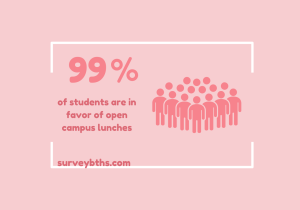The rise of hoverboards
Hoverboards are starting to become a big phenomena this year. There are a lot of safety concerns regarding the hoverboards.
January 20, 2016
Within the last year, we have witnessed all kinds of new ideas and technology, one of the most intriguing being those sleek looking hover boards zipping amongst us. Back to the Future, a science-fiction movie which premiered over 30 years ago, predicted that by 2015, human-beings would no longer be walking, and instead be getting around by means of hoverboards. Unfortunately, we are not there yet, but we do have a new toy which is kind of like a floating hoverboard, ours is more like a horizontal scooter with two wheels.
From parks to high school campuses, shopping malls to suburban neighborhoods, these modern hoverboards seem to be everywhere we look.
These new toys picked up a great deal of popularity in the latter part of 2015. They are manufactured and sold by many companies like IO Hawk, Phunkeeduck, Swagway, Monorover R2D and Powerboard. You can get your hands on one for about $450, and they come with a one-year warranty. Even though they do not actually hover, these self-balancing scooters are becoming more and more popular each day.
Now, these new hoverboards are literally the “hottest” toys in the stores. There have been several reports of hover boards unexpectedly catching on fire. In a severe case, a hoverboard ignited up in flames and burned down an entire house.
There have been 28 official reports of hover boards catching on fire in 19 states. Each case is now under investigation by the U.S. Consumer Product Safety Commission. The U.S. Consumer Product Safety Commission is an independently run agency of the U.S. government which regulates most consumer products and bans any they deem too dangerous. The main cause for investigation comes from these sporadic fires erupting from the hoverboards. Because these fires are so random and nobody seems to know how or why they keep occurring, several major airlines have banned them from boarding airplanes.
After comparing each of the unique instances where a board caught fire, it was found that the fires are starting from the hover boards battery. These boards all are powered by Li-ion batteries that are now manufactured in China as a cheap alternate to the more expensive, high quality batteries used by major corporations like LG and Samsung.
Airline companies are not alone in the fight against hoverboards because many top universities and other schools have begun banning them from campus. The reasons behind the bans stem from the fear of the hoverboard catching on fire and causing a disruption on campuses. Colleges which have initiated bans include: Boston College, University of Kentucky, University of Massachusetts, George Washington University and University of Alabama.
The introduction of these new hoverboards have amassed global popularity. Despite their unpredictable dangers, one thing is for certain: these hoverboards have revolutionized individual transportation and will continue to change how humans get around.
















